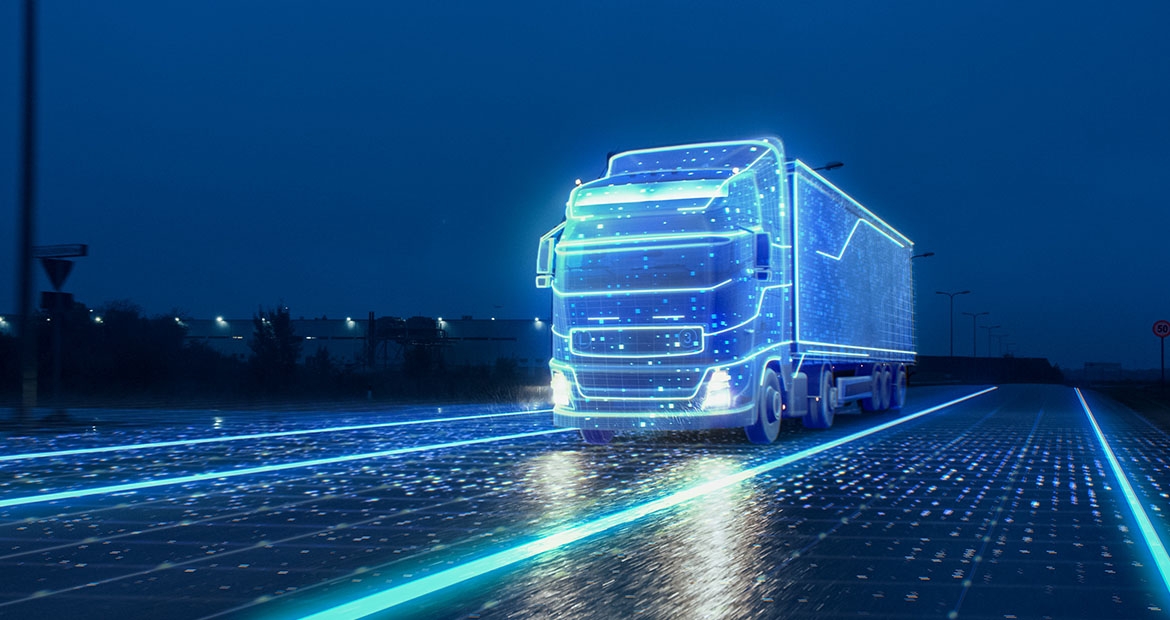Virtual sensors and their role in the energy future
By Cummins Components Business Unit

What are virtual sensors and how are they different from traditional sensors?
Virtual sensors are an emerging software-based technology that can make a big difference in how we monitor and manage engines and vehicle performance. Unlike traditional sensors, which are physical pieces of hardware that need to be installed in specific places within the engine to work, virtual sensors work by using data from other sources within the vehicle's system. They help in calculating crucial aspects like temperature, pressure and speed of an engine, without the need for additional equipment. Building a virtual sensor requires a thorough understanding of the engine system. It relies on a statistical model to accurately predict critical parameters. The field of virtual sensors is a complex and very interesting engineering. Significant improvements in the computing power of microprocessors combined with the latest advancements in modeling technology over last decades, have made it possible to run these complex virtual sensors at runtime on Electronic Control Modules.
For OEMs of medium and heavy-duty vehicles, like trucks used in construction or delivery services, the broader adoption of virtual sensors will be a game changer. For example, instead of installing multiple physical sensors throughout the engine to monitor temperatures, a virtual sensor can use data from the existing sensors to create a complete and easy-to-understand picture of temperatures throughout the entire engine. This helps manufacturers save on costs, maintain the vehicle better and prevent issues before they arise. This also optimizes performance and makes vehicles run more efficiently with less environmental impact like lower greenhouse gas emissions.
The benefits we can expect from the use of virtual sensors
Virtual sensors can help with cost savings:
The transition from physical to virtual sensors provides multiple benefits, the most important being substantial cost savings. OEMs can save on costs by decreasing the need for replacement parts in an engine’s sensor system while also freeing up space. Additionally, it reduces potential failure modes, by eliminating a component that may need to be serviced or replaced.
Virtual sensors ensure latest technology updates with minimal downtime:
Virtual sensors make it easier to ensure an engine has the latest sensor and monitoring technology. Since virtual sensors are software-based, upgrades can be installed using a nearby computer or even Over The Air (OTA) using wireless networks. This removes the need to take apart the engine to install new parts or bring a vehicle into a maintenance facility. This in turn minimizes downtime and gets the vehicles back on the road quicker. Virtual sensors also play a key backup role in providing critical intelligence on vehicle performance even if some sensors fail. Thus, allowing continued limited use of the vehicle in safe conditions.
Virtual sensors help improve fuel efficiency:
Another significant benefit of virtual sensors is the overall weight reduction of not only the physical sensor but also of the harness which connects the sensor to the ECM. In the long run, cumulative weight reduction efforts in a vehicle can have a positive impact on fuel economy, a critical factor especially in medium and heavy-duty vehicles. Reducing the vehicle weight directly increases fuel efficiency and cuts emissions.
Virtual sensors help make engines testing environmentally friendly.
Lastly, in their development virtual sensors have already made engine testing processes significantly more straightforward and environmentally friendly. Traditional engine testing methods, namely using test cells, are not only cumbersome but also a contributor to emissions. With virtual sensors, tests are done through computer simulations, reducing the need for physical test cell environments. This not only simplifies the testing process but also aligns well with the global push towards reducing emissions.
Applications that can gain from using virtual sensors:
Long-haul trucking operations stand to gain from using virtual sensors as they allow for the close monitoring of engine temperatures, which can prevent overheating and optimize the vehicle's performance over long distances. Similarly, delivery vehicles used for transporting temperature-sensitive goods can use virtual sensors to maintain precise temperature conditions, which is crucial for the safe transit of perishables, while simultaneously monitoring parameters like fuel pressure and coolant temperature.
Construction and mining operations are renowned for their demanding environments. In these sectors virtual sensors play a pivotal role in safeguarding engines from potential damage due to fluctuating oil levels or high pressure and help to lengthen the lifespan of vehicles. Of course, emissions monitoring in these applications also assists fleet owners in adhering to increasingly strict environmental and emissions regulations.
In conclusion, virtual sensors are emerging to offer exciting possibilities for industries everywhere. Imagine better ways to predict when machines need fixing or how to save fuel in vehicles. As technology keeps improving, virtual sensors will likely become a normal part of how we do things, making processes more efficient and reliable.
Author Profiles
Related Tags